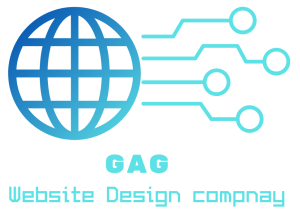In today’s digital age, “Website Design For Fitness Businesses ” establishing a strong online presence is essential for fitness businesses to thrive.
With more people turning to the internet to find fitness solutions, a well-designed website can be the key to attracting and retaining clients. In this article, we will delve into the crucial aspects of website design tailored specifically for fitness businesses.
From understanding your audience to optimizing user experience and leveraging online tools, we’ll explore actionable strategies to help you create a website that not only captures attention but also converts visitors into loyal clients.
Whether you’re a personal trainer, gym owner, or fitness coach, this guide will equip you with the knowledge and insights needed to succeed in the competitive online landscape of the fitness industry.
Understanding the Website Design For Fitness Businesses

In the bustling world of online fitness businesses, it’s essential to grasp the unique dynamics and trends shaping the industry. Understanding the digital landscape will not only help you identify opportunities but also navigate challenges effectively.
Market Trends and Demographics:
Begin by researching the latest market trends and demographics within the fitness industry. Analyze data related to consumer preferences, behavior, and spending habits. This will provide valuable insights into the types of services and content that resonate most with your target audience.
Competitor Analysis:
Conduct a thorough analysis of your competitors’ online presence. Explore their websites, social media profiles, and marketing strategies. Identify their strengths, weaknesses, and areas where you can differentiate yourself. This analysis will help you position your fitness business effectively and capitalize on untapped opportunities.
Technology and Digital Tools:
Stay abreast of the latest technological advancements and digital tools relevant to the fitness industry. From fitness tracking apps to virtual training platforms, there’s a wide array of tools available to enhance your online presence and streamline operations. Evaluate which tools align with your business goals and budget, and integrate them strategically into your website and marketing efforts.
Regulatory and Legal Considerations:
Be aware of any regulatory and legal considerations specific to operating a fitness business online. This may include compliance with data protection regulations, intellectual property rights, and online advertising guidelines. Taking proactive steps to ensure legal compliance will protect your business from potential risks and liabilities.
Emerging Opportunities:
Keep an eye out for emerging opportunities within the digital fitness landscape. This could include trends such as virtual coaching, live streaming workouts, or niche fitness communities. By staying agile and adaptive, you can position your business to capitalize on these emerging trends and stay ahead of the competition.
Identifying Your Target Audience and Niche
Identifying your target audience and niche is a critical step in creating a successful online presence for your fitness business. By understanding the specific needs, preferences, and pain points of your audience, you can tailor your website and marketing efforts to effectively attract and engage potential clients.
Market Research:
Begin by conducting thorough market research to identify your target audience. This involves gathering data on demographics, interests, and behaviors of individuals who are likely to be interested in your fitness services. Use tools such as surveys, interviews, and analytics to gather insights into your target market.
Defining Your Niche:
Once you have a clear understanding of your target audience, it’s time to define your niche within the fitness industry. Consider what sets your business apart from competitors and identify the unique value proposition that you offer. Whether it’s specializing in a specific type of fitness training, catering to a particular demographic, or offering unique services, defining your niche will help you attract clients who resonate with your brand.
Creating Buyer Personas:
Develop detailed buyer personas based on your research to represent different segments of your target audience. These personas should include information such as age, gender, fitness goals, challenges, and preferences. By understanding the motivations and needs of your ideal clients, you can tailor your website content, messaging, and offers to resonate with them on a personal level.
Mapping the Customer Journey:
Map out the customer journey to understand the various touchpoints and interactions that potential clients have with your brand online. From initial awareness to conversion and retention, identify key moments where you can engage and influence your audience. This will help you design a website that guides visitors seamlessly through the customer journey and encourages them to take action.
Testing and Iteration:
Continuously test and iterate your understanding of your target audience and niche as your business evolves. Pay attention to feedback from clients, monitor website analytics, and stay updated on industry trends to ensure that your website remains relevant and effective in attracting and retaining clients.
Crafting an Engaging Website Design: Essential Elements

Creating an engaging website design is crucial for capturing the attention of visitors and encouraging them to explore your fitness business further. From aesthetics to functionality, each element of your website plays a role in shaping the user experience and conveying your brand message effectively.
Clear and Compelling Brand Messaging:
Start by defining clear and compelling brand messaging that communicates the unique value proposition of your fitness business. Your website’s homepage should succinctly convey who you are, what you offer, and why visitors should choose your services over competitors. Use concise and engaging language that resonates with your target audience and aligns with your brand identity.
Visually Appealing Design:
Invest in a visually appealing design that reflects the ethos of your fitness business and creates a positive first impression. Choose a cohesive color scheme, typography, and imagery that evoke the desired emotions and convey professionalism. Incorporate high-quality photos and graphics that showcase your facilities, trainers, and clients in action, capturing the energy and excitement of your fitness community.
Intuitive Navigation:
Ensure that your website is easy to navigate, with intuitive menus and clear calls-to-action that guide visitors through the desired path. Organize content logically and prioritize key information such as services, pricing, and contact details for easy access. Implement a responsive design that adapts seamlessly to different devices and screen sizes, ensuring a consistent and user-friendly experience across desktops, tablets, and smartphones.
Compelling Content:
Create compelling and informative content that engages visitors and establishes your authority in the fitness industry. Incorporate a mix of written articles, blog posts, videos, and testimonials that showcase your expertise and provide value to your audience. Address common questions and concerns that potential clients may have, and highlight the benefits of your services in addressing their fitness goals and aspirations.
Interactive Elements:
Integrate interactive elements such as online booking forms, interactive class schedules, and live chat support to enhance user engagement and convenience. Empower visitors to take action directly from your website, whether it’s scheduling a consultation, signing up for a class, or contacting your team for more information. Provide seamless integration with popular fitness apps and platforms to streamline the user experience and encourage conversions.
Optimization for Speed and Performance:
Optimize your website for speed and performance to ensure fast loading times and smooth browsing experiences. Compress images, minify code, and leverage caching techniques to reduce page load times and improve overall performance. Monitor website performance regularly and address any issues that may arise, such as broken links or slow-loading pages, to maintain a positive user experience.
Optimizing User Experience for Seamless Navigation
Creating a seamless user experience (UX) on your fitness website is crucial for engaging visitors and converting them into clients. By optimizing navigation and usability, you can ensure that visitors can easily find the information they need and take action.
Clear and Intuitive Navigation:
Start by designing a clear and intuitive navigation menu that allows visitors to easily navigate your website. Organize your content into logical categories and use descriptive labels for menu items. Keep the navigation menu consistent across all pages to maintain a seamless browsing experience.
Mobile Responsiveness:
With the increasing use of mobile devices, it’s essential to ensure that your website is optimized for mobile responsiveness. This means that your website should adapt seamlessly to different screen sizes and resolutions, providing a consistent experience across desktops, tablets, and smartphones. Test your website on various devices to ensure that it displays correctly and functions smoothly on all platforms.
Fast Loading Speed:
Optimize your website for fast loading speed to prevent visitors from getting frustrated and abandoning your site. Minimize image sizes, use browser caching, and optimize code to reduce page load times. A fast-loading website not only improves user experience but also boosts search engine rankings, as speed is a ranking factor for search engines like Google.
Clear Call-to-Action (CTA):
Include clear and compelling call-to-action (CTA) buttons throughout your website to guide visitors towards taking desired actions, such as booking a consultation or signing up for a newsletter. Use contrasting colors, persuasive language, and strategic placement to make CTAs stand out and encourage clicks.
Streamlined Forms and Checkout Process:
If your fitness business offers online booking or purchasing services, streamline the forms and checkout process to minimize friction and increase conversions. Use autofill features, progress indicators, and clear instructions to guide users through the process seamlessly. Keep forms concise and only ask for essential information to reduce user effort.
Accessibility Considerations:
Ensure that your website is accessible to users of all abilities by following accessibility best practices. This includes providing alternative text for images, using semantic HTML markup, and designing with keyboard navigation in mind. By making your website accessible, you can reach a broader audience and demonstrate your commitment to inclusivity.
User Testing and Feedback:
Regularly conduct user testing and gather feedback from visitors to identify areas for improvement in your website’s user experience. Use tools such as heatmaps, session recordings, and surveys to gain insights into user behavior and preferences. Incorporate feedback into your website design and optimization efforts to continually enhance the user experience.
Showcasing Your Expertise: Content Creation and Presentation

In the competitive landscape of the fitness industry, showcasing your expertise through compelling content is essential for attracting and retaining clients. By creating valuable and engaging content, you can establish yourself as a trusted authority in your niche and build strong relationships with your audience.
Identifying Content Themes:
Start by identifying content themes that align with your expertise and resonate with your target audience. Consider topics such as workout tips, nutrition advice, success stories, and industry insights. Tailor your content to address the needs, interests, and challenges of your audience while highlighting your unique perspective and expertise.
Creating High-Quality Content:
Focus on creating high-quality content that provides value to your audience and showcases your expertise. This could include blog posts, articles, videos, podcasts, infographics, and more. Use a mix of formats to cater to different preferences and learning styles. Ensure that your content is well-researched, informative, and engaging, with clear and actionable takeaways for your audience.
Visual Presentation:
Pay attention to the visual presentation of your content to enhance its appeal and effectiveness. Use high-quality images, graphics, and videos to complement your written content and make it more engaging. Incorporate branding elements such as logos, colors, and fonts to maintain consistency and reinforce your brand identity across all content channels.
Search Engine Optimization (SEO):
Optimize your content for search engines to improve its visibility and reach. Conduct keyword research to identify relevant keywords and phrases related to your content topics. Incorporate these keywords naturally into your content, including headings, titles, and meta descriptions. Focus on providing valuable and relevant content that addresses the needs of your audience while also satisfying search engine algorithms.
Engagement and Interaction:
Encourage engagement and interaction with your content by inviting comments, questions, and feedback from your audience. Respond promptly to comments and messages to foster a sense of community and build trust with your audience. Encourage social sharing by including social media buttons and sharing options on your content.
Consistency and Frequency:
Maintain consistency in your content creation efforts by establishing a regular publishing schedule and sticking to it. Whether you post new content weekly, bi-weekly, or monthly, consistency is key to building momentum and keeping your audience engaged. Monitor performance metrics such as website traffic, engagement, and conversion rates to refine your content strategy and optimize for maximum impact.
Incorporating Visuals: Imagery and Multimedia for Impact
In the realm of fitness, incorporating captivating visuals is paramount to grabbing attention, enhancing engagement, and conveying your message effectively. Utilizing imagery and multimedia strategically can significantly elevate the appeal and impact of your website, making it more compelling and memorable for visitors.
Selecting High-Quality Images:
Choose high-quality images that align with your brand identity and resonate with your target audience. Whether it’s professional photographs, stock images, or user-generated content, ensure that the visuals you use are relevant, visually appealing, and reflect the values and ethos of your fitness business.
Highlighting Success Stories and Transformations:
Showcase success stories and client transformations through before-and-after photos or videos. These visuals not only demonstrate the effectiveness of your fitness programs but also inspire trust and confidence in your services. Ensure that you have consent from clients before featuring their images or testimonials on your website.
Creating Engaging Videos:
Incorporate videos into your website to provide dynamic and interactive content for your audience. This could include workout tutorials, client testimonials, behind-the-scenes glimpses of your training sessions, or educational content on fitness and nutrition. Keep videos concise, engaging, and informative to maintain viewer interest and retention.
Using Infographics and Visual Data:
Present complex information and statistics in a visually appealing format using infographics and data visualizations. This can help make your content more digestible and accessible to your audience, allowing them to grasp key concepts and insights at a glance. Use colors, icons, and illustrations to enhance visual appeal and convey information effectively.
Consistent Branding and Visual Style:
Maintain consistency in your branding and visual style across all visual elements on your website. This includes using consistent colors, fonts, and design elements to create a cohesive and recognizable brand identity. Consistent branding helps reinforce your brand image and build trust with your audience.
Optimizing for Performance:
Optimize visual content for performance by optimizing image file sizes, using responsive design techniques, and leveraging content delivery networks (CDNs) to ensure fast loading times across devices and screen sizes. Slow-loading visuals can negatively impact user experience and lead to higher bounce rates.
Accessibility Considerations:
Ensure that all visual content on your website is accessible to users of all abilities by providing alternative text for images, captions for videos, and ensuring compatibility with screen readers and assistive technologies. Making your visual content accessible ensures that all visitors can engage with your website effectively.
Conclusion
In the ever-evolving digital landscape, effective website design plays a pivotal role in the success of fitness businesses.
By understanding the nuances of the online fitness industry, identifying target audiences and niches, optimizing user experience, showcasing expertise through content creation, and incorporating visually appealing elements, fitness professionals can create compelling websites that attract and retain clients.
Furthermore, leveraging technology, staying abreast of industry trends, and consistently refining strategies based on data and feedback are essential for staying competitive in the digital realm.
With a well-designed website tailored to the needs and preferences of their audience, fitness businesses can establish a strong online presence, build trust, and ultimately achieve their goals of attracting and retaining clients in the dynamic world of online fitness.
FAQs (Frequently Asked Questions)
- Why is website design important for fitness businesses?
- Website design is crucial for fitness businesses as it serves as the digital storefront for attracting and engaging potential clients. A well-designed website can convey professionalism, showcase expertise, and make a lasting impression on visitors, ultimately leading to increased client acquisition and retention.
- How can I identify my target audience and niche?
- To identify your target audience and niche, conduct thorough market research to understand the demographics, interests, and preferences of potential clients. Define your unique value proposition and assess the competitive landscape to identify opportunities for differentiation within the fitness industry.
- What elements contribute to optimizing user experience on a fitness website?
- Optimizing user experience involves various elements, including clear and intuitive navigation, mobile responsiveness, fast loading speed, compelling call-to-action buttons, streamlined forms and checkout processes, accessibility considerations, and user testing and feedback incorporation.
- What types of content should I create to showcase my expertise?
- Content creation for showcasing expertise in the fitness industry can include a diverse range of formats such as blog posts, articles, videos, podcasts, infographics, success stories, workout tips, nutrition advice, and industry insights. The key is to provide valuable, informative, and engaging content that resonates with your target audience.
- How can I ensure my fitness website ranks well on search engines?
- To improve search engine rankings for your fitness website, focus on search engine optimization (SEO) strategies such as keyword research, content optimization, link building, and user experience optimization. Providing high-quality, relevant content and adhering to SEO best practices can help improve visibility and attract organic traffic.
- What are some best practices for maintaining consistency in content creation?
- Maintaining consistency in content creation involves establishing a regular publishing schedule, sticking to it, and diversifying content formats to keep audiences engaged. Monitor performance metrics, gather feedback, and refine your content strategy based on data insights to ensure continuous improvement and audience engagement.
- How can I leverage technology to enhance my fitness website?
- Technology can be leveraged to enhance fitness websites in various ways, such as incorporating online booking and scheduling systems, integrating fitness tracking apps, offering virtual training sessions, and utilizing social media and email marketing tools to engage with audiences and promote services effectively.
- What should I do if I encounter challenges with my fitness website?
- If you encounter challenges with your fitness website, such as technical issues, low traffic, or poor conversion rates, it’s essential to troubleshoot and address them promptly. Seek assistance from web developers, SEO specialists, or digital marketing professionals to diagnose and resolve issues effectively, and continuously iterate and optimize your website based on performance metrics and user feedback.



